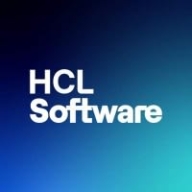

HCL Workload Automation and JAMS are competing in the workload automation category. HCL Workload Automation seems to have the upper hand in integrated functionality and flexibility, while JAMS is preferred for its straightforward execution process.
Features: HCL Workload Automation offers comprehensive job scheduling capabilities, compatibility across various platforms, and scalability for complex enterprise environments. JAMS focuses on streamlined workflows and automation efficiency, providing a simpler interface for automation tasks. The main difference lies in their target environments, with HCL aiming for intricate operations and JAMS offering a user-friendly setup.
Ease of Deployment and Customer Service: JAMS is recognized for quick deployment and supportive customer service, delivering a readily accessible solution. HCL Workload Automation requires intricate setup but offers comprehensive support once implemented. JAMS provides faster initial deployment while HCL delivers robust long-term support.
Pricing and ROI: HCL Workload Automation involves a higher upfront investment with substantial ROI through its versatile features catering to extensive enterprise demands. JAMS offers competitive pricing with lower initial costs, appealing to businesses seeking cost-effective solutions with efficient operations. Despite differing price points, each product presents unique ROI potential based on organizational needs and budget allocations.

HCL Workload Automation manages complex workflows, enabling efficient job scheduling and monitoring, essential for companies needing robust task automation.
HCL Workload Automation is designed to streamline tasks, handle large data volumes, ensure timely execution of processes, and integrate applications seamlessly. It is crucial for improving operational efficiency and reducing manual intervention. Users value its scheduling capabilities, integration flexibility, and performance. The tool's advanced features for monitoring and reporting enhance task management efficiency. Its reliability and scalability are key strengths. However, users note that it could benefit from enhanced reporting, simplified configuration, improved documentation, and better technical support response times. Optimization for resource utilization would also boost performance levels.
What are the key features of HCL Workload Automation?HCL Workload Automation is implemented in industries that require efficient job scheduling and monitoring, such as finance, healthcare, and IT services. It helps streamline processes, manage high volumes of data, and integrate with critical applications, ensuring operational efficiency. Different industries use it for automating repetitive tasks and enhancing productivity.
JAMS offers efficient automation and scheduling with strong capabilities in planning, dependency management, and multi-platform support. Its intuitive interface and robust tools assist in managing complex workflows for enhanced resource allocation.
JAMS stands out for its blend of automation and scheduling capabilities, making it suitable for handling complex workflows across platforms. Its features such as batch scheduling, natural language scheduling, and interactive agents promote seamless integration with other tools like PowerShell. The focus on metrics and notifications ensures users are informed about operational efficiency enhancements. While JAMS is effective in many areas, users report a need for improved simulation for termination processes and a more intuitive client setup. They see potential in enhanced search functions, better exception handling, and greater transparency in custom execution. The current setup challenges like disappearing options and mobile accessibility can affect user satisfaction. Including a fully web-based client and improving documentation could add value.
What are JAMS' key features?
What benefits should users consider?
Organizations using JAMS for workflow and batch job automation leverage its capabilities for SSIS, SQL procedures, and Python scripts. JAMS supports file automation and managed file transfers across environments like AWS and Azure. Users employ JAMS for data management, reporting, and integration tasks, including handling holiday-aware scheduling for improved task coordination.
We monitor all Workload Automation reviews to prevent fraudulent reviews and keep review quality high. We do not post reviews by company employees or direct competitors. We validate each review for authenticity via cross-reference with LinkedIn, and personal follow-up with the reviewer when necessary.